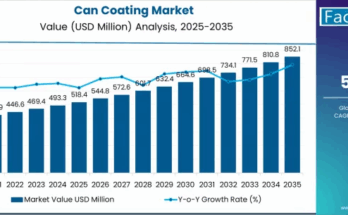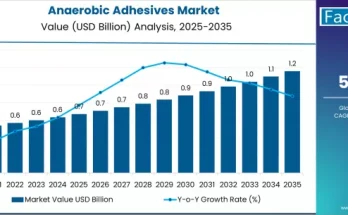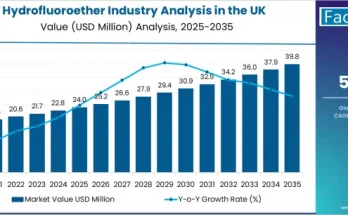Microfiber synthetic leather has emerged as a revolutionary material, blending durability, luxury, and sustainability. As industries increasingly shift toward eco-friendly and cruelty-free alternatives, microfiber synthetic leather is becoming a key component in automotive, fashion, furniture, and electronic applications. Its lightweight, breathable, and resilient nature makes it a preferred alternative to traditional leather, meeting both consumer demands and environmental objectives.
Market Overview
The microfiber synthetic leather market is witnessing rapid growth as manufacturers and consumers prioritize ethical production and sustainability. Unlike conventional leather, microfiber synthetic leather avoids the environmental impact associated with animal hides while offering comparable texture, comfort, and longevity. Modern production methods—such as advanced needle-punching, solvent-free processes, and polyurethane coatings—have enhanced product performance, making it suitable for a wide range of applications, from luxury handbags to automotive interiors.
Key Market Drivers
Sustainability and Ethical Consumption
One of the most significant drivers is the growing consumer awareness around sustainability and ethical sourcing. With rising concerns over animal welfare and environmental degradation, both consumers and manufacturers are actively seeking alternatives that minimize carbon footprint and avoid animal exploitation. This trend is particularly prominent in Europe and North America, where the demand for vegan products and responsible fashion continues to surge.
Technological Advancements
Recent innovations in microfiber production have allowed synthetic leather to closely mimic the feel and durability of natural leather. Techniques like solvent-free coating, improved PU formulations, and color customization have expanded the versatility of microfiber leather. These advancements not only enhance quality but also reduce environmental impact, making it a preferred choice across multiple industries.
Automotive Applications
The automotive sector is a major contributor to the growth of microfiber synthetic leather. Car manufacturers increasingly prefer microfiber leather for seats, dashboards, and trim panels due to its lightweight, abrasion resistance, and temperature tolerance. As electric vehicle production accelerates, manufacturers are emphasizing sustainable and lightweight materials, further boosting microfiber leather adoption.
Fashion, Footwear, and Accessories
Microfiber synthetic leather is gaining traction in fashion and footwear sectors due to its affordability, breathability, and water resistance. Sportswear, casual footwear, handbags, and accessories are increasingly being made with microfiber leather, aligning with consumer preferences for cruelty-free and eco-conscious products.
E-commerce and Retail Expansion
The rise of online retail has also enhanced market visibility and accessibility. Consumers are increasingly purchasing vegan products online, aided by certifications and transparent labeling that highlight sustainability credentials. This trend has accelerated market growth by bringing microfiber leather into mainstream consumer awareness.
Regional Insights
Asia-Pacific
The Asia-Pacific region dominates the microfiber synthetic leather market due to its strong manufacturing capabilities and growing demand across automotive, fashion, and footwear industries. China is a leading producer, benefiting from cost-effective labor, robust supply chains, and abundant raw materials. Emerging markets like India and Indonesia are also witnessing increased adoption driven by urbanization, rising disposable incomes, and sustainability awareness.
North America
In North America, growth is fueled by ethical consumerism and the rising popularity of plant-based and cruelty-free products. U.S. and Canadian consumers favor sustainable fashion and automotive interiors, particularly in premium segments. Automotive OEMs are increasingly incorporating microfiber leather into seats, dashboards, and trims, while fashion brands launch microfiber-based vegan collections.
Europe
Europe is experiencing strong market growth due to stringent regulations on carbon emissions and animal-derived materials. Luxury fashion brands and high-end automakers are incorporating microfiber synthetic leather into their products to meet ESG goals. Germany, France, Italy, and the U.K. are key markets, with consumers actively seeking certified vegan and environmentally responsible products.
Middle East & Africa
The Middle East and Africa present emerging opportunities. Rising urbanization, awareness of sustainability, and an expanding middle class are creating favorable conditions for microfiber leather adoption, especially in automotive and furniture sectors.
Market Challenges
Despite its advantages, microfiber synthetic leather faces certain challenges:
High Production Costs
The manufacturing process for microfiber leather is complex and technology-intensive, making it more expensive than conventional synthetic leathers like PVC. Price sensitivity may limit adoption in cost-driven markets, particularly in low-margin segments like budget footwear and automotive interiors.
Raw Material Limitations
While marketed as sustainable, microfiber leather production still relies heavily on petroleum-based polymers like polyurethane and polyester. Fully bio-based alternatives remain in early development or are cost-prohibitive, presenting challenges for scaling production sustainably.
Competition from Emerging Alternatives
Plant-based leathers derived from pineapple leaves, mushrooms, and apple waste are gaining attention for being biodegradable and offering a circular lifecycle. If these alternatives achieve scalability and competitive pricing, they could reduce demand for microfiber synthetic leather, particularly in premium segments.
Country-Wise Outlook
United States
The U.S. market is growing steadily, driven by demand for sustainable, high-performance materials. Automotive manufacturers like Tesla, Ford, and GM are increasingly using microfiber leather in vehicle interiors. The footwear and furniture industries are also adopting microfiber leather due to its affordability, durability, and easy maintenance. E-commerce and ethical fashion brands are expanding its consumer reach.
China
China is witnessing rapid market growth, supported by strong domestic manufacturing capabilities. Cost-effective labor, efficient supply chains, and abundant raw materials make China a major global producer. The local market is also expanding due to rising urbanization, disposable income, and increased consumer awareness of sustainable alternatives.
Europe
Europe’s market growth is driven by strong regulatory frameworks and consumer preferences for ethical products. Luxury fashion houses and high-end automakers are actively incorporating microfiber leather to meet ESG standards. The region’s emphasis on sustainability and environmental responsibility is fueling widespread adoption.
Applications & End-Use Outlook
Microfiber synthetic leather finds applications in multiple industries:
- Automotive Interiors: Seats, dashboards, trim panels, and steering wheels.
- Fashion & Accessories: Handbags, belts, jackets, footwear, and watches.
- Furniture & Home Décor: Sofas, chairs, and decorative items.
- Electronics & Gadgets: Laptop cases, phone covers, and other protective accessories.
These applications are expected to expand further as manufacturers continue to prioritize lightweight, durable, and sustainable materials.
Key Trends
- Increasing adoption of eco-friendly materials by automotive OEMs.
- Growth of vegan and cruelty-free fashion accessories.
- Technological innovations improving texture, color, and durability of microfiber leather.
- Government incentives supporting sustainable manufacturing.
- Collaboration between manufacturers and fashion/automotive brands to meet consumer demand for ethical products.
Future Outlook
The microfiber synthetic leather market is poised for sustained growth due to rising ethical consumerism, technological innovations, and industry demand for sustainable alternatives. As manufacturers enhance production methods and reduce environmental impact, microfiber leather is likely to replace conventional leather in multiple sectors. Emerging alternatives such as plant-based and fully biodegradable leathers will coexist, pushing the market toward greater innovation and sustainability.
Conclusion
Microfiber synthetic leather represents a transformative shift in how industries approach sustainability, ethics, and product performance. From automotive interiors to fashion and home furnishings, its durability, versatility, and eco-conscious attributes make it a compelling alternative to traditional leather. With ongoing technological advancements, supportive regulations, and growing consumer awareness, the microfiber synthetic leather market is set for remarkable expansion in the coming decade.



